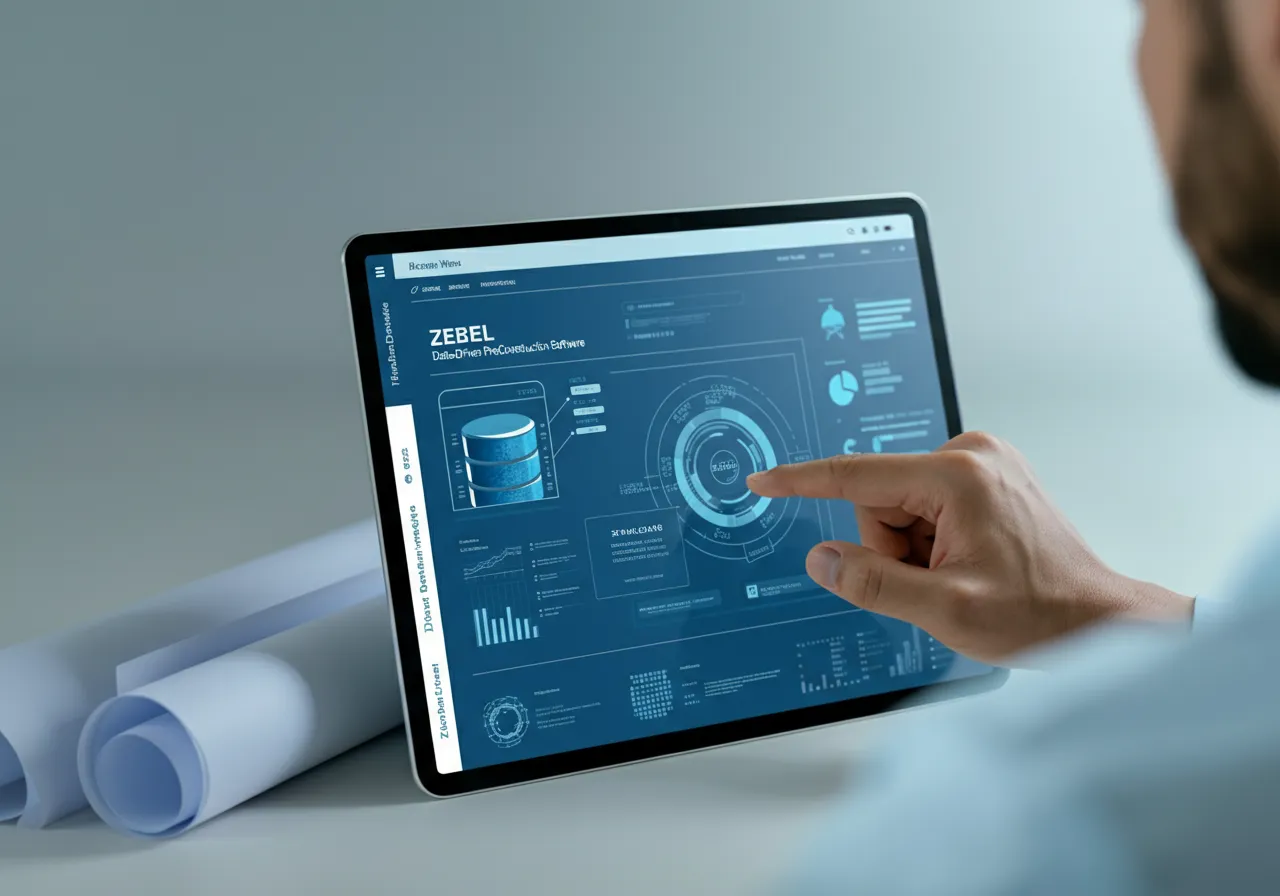Efficient and accurate bid leveling is crucial for successful construction projects, yet many industry professionals still struggle to achieve it. Traditional methods often involve labor-intensive processes, inconsistencies, and errors, hindering decision-making and project timelines.
This blog explores the challenges of traditional bid leveling, introduces steps to improve the process, and shows how Zebel simplifies bid leveling for general contractors, developers, and other construction professionals.
What Is Bid Leveling in Construction?
Construction bid leveling compares subcontractor bids to ensure they align with project requirements and specifications. The process aims to provide an apples-to-apples comparison, enabling project stakeholders to identify discrepancies, omissions, exclusions, or revisions in bids.
Effective bid leveling ensures the lowest bid is not only affordable but also comprehensive, reducing financial or logistical risks during project execution.
Why Accurate Bid Leveling Matters
- Improved Bid Accuracy: Holistic and accurate bid comparisons allow project owners and general contractors to make informed decisions.
- Identifying Gaps in Scope: Spotting unaccounted-for items or undefined responsibilities ensures no critical aspects of the project are overlooked.
- Avoiding Costly Discrepancies: Identifying omissions and exclusions early saves time and money later in the project.
- Ensuring Alignment: Matching subcontractor bids with the project’s scope of work guarantees adherence to timelines and quality requirements.
Key Components in Bid Leveling
The bid leveling process involves analyzing and comparing several critical components to ensure clarity and alignment with the project requirements. These components include:
- Specifications: Reviewing the specific details outlined in each bid, such as materials, design elements, and technical requirements, ensures they align with the project’s needs and standards.
- Scope of Work: Assessing the included tasks and responsibilities helps confirm that all aspects of the project’s scope are reflected in the bid, preventing potential gaps or misunderstandings.
- Materials: Comparing material quality and quantities ensures consistency and adherence to project expectations while avoiding unexpected cost implications or shortages.
- Overhead Costs: Evaluating overhead and indirect costs, such as labor, equipment, and administrative expenses, is essential to understanding the full financial impact of each bid.
By closely examining these components, project managers and decision-makers can achieve a clear and comprehensive understanding of each bid, leading to more informed and confident choices.
Challenges of Traditional Bid Leveling Methods
Manual Processes Relying on Spreadsheets
Historically, many construction companies have relied on tools like Excel for bid leveling. While flexible and familiar, spreadsheets are time-consuming and error-prone. Below are common hurdles in traditional bid leveling processes:
- Data Overload: Managing large volumes of subcontractor bids in a bid leveling sheet leads to confusion and inefficiency.
- Errors and Omissions: Manually combing through bid documents increases the likelihood of overlooking critical revisions or discrepancies.
- Difficulty Comparing Bids: Construction projects involve various bid packages with unique formats, making it challenging to achieve a true bid comparison.
Identifying Exclusions and Revisions
Subcontractors often propose cost-saving strategies by excluding items or introducing design alternatives. Without robust processes, project teams risk missing clarifications or changes during bid review, creating expensive surprises later.
Key Benefits of Effective Bid Leveling
Streamlined bid leveling drives better outcomes for every stakeholder involved. Here’s what a thoughtful and updated bid leveling process achieves:
- Cost Efficiency: Confidently choose the best bid—not simply the lowest bid—that aligns with your project’s requirements.
- Timely Decision-Making: High-speed bid analysis ensures deadlines are met without sacrificing accuracy.
- Risk Reduction: Transparent comparisons highlight inconsistencies that could result in disputes or delays.
- Stronger Subcontractor Relationships: Transparent and fair practices foster trust with your chosen partners.
Step-by-Step Guide to the Construction Bid Leveling Process
1. Define the Scope of Work
Before comparing bids, ensure the request for proposal (RFP) clearly outlines project requirements, timelines, and expectations. This step minimizes miscommunication with subcontractors.
2. Collect Subcontractor Bids
Gather bids using templates to ensure consistency. Organize all bid packages and include critical requirements like clarifications, exclusions, and revisions for easy access.
3. Standardize Data Formats
Place all submissions into a bid leveling spreadsheet or contractor software to maintain uniformity between competing bids. Standardized templates reduce the risk of misplaced values or formatting errors.
4. Identify Discrepancies
Compare each bid against the RFP. Look for omitted elements, exclusions, or differences in costs that may affect timelines or final deliverables.
5. Verify Costs and Quantities
Conduct a detailed assessment of construction cost estimations, factoring in material prices, labor hours, and equipment. Cross-validate these with your project’s historical cost database, if available.
6. Finalize Selections
Once the most comprehensive and cost-efficient contractor’s bid has been identified, finalize contracts and integrate the approved bid into your project management tools.
Best Practices for Effective Bid Leveling
Whether using manual methods or advanced bid leveling tools, these tips ensure better results in bid leveling and subcontractor management:
- Thorough Documentation: Save all bid documents, clarifications, revisions, and comparisons to review later if needed.
- Regular Team Communication: Hold meetings with project owners, general contractors, and subcontractors during preconstruction for consistent alignment.
- Template Standardization: Start projects with clear bid forms and leveling sheets to streamline submissions and minimize errors.
- Invest in Technology: Automation tools ease manual workloads, enhance data accuracy, and significantly speed up the process.
Bid Leveling Example
Below is an example of a bid leveling sheet comparing three subcontractor bids for a commercial roofing project. The table highlights key cost categories and adjustments required to ensure a fair comparison:
|
Cost Category |
Subcontractor A |
Subcontractor B |
Subcontractor C |
|
Base Bid Price |
$150,000 |
$145,000 |
$155,000 |
|
Scope Adjustments |
+$5,000 |
+$10,000 |
-$5,000 |
|
Exclusions Revisions |
+$3,000 |
– |
+$2,000 |
|
Contingencies |
+$2,000 |
+$3,000 |
+$2,000 |
|
Total Adjusted Bid |
$160,000 |
$158,000 |
$154,000 |
This table demonstrates how adjustments ensure all bids align with the project’s requirements, making it easier to compare costs fairly and select the most competitive and compliant bid.
How Zebel Simplifies Construction Bid Leveling
Zebel is transforming the game with its bid management module and data analytics platform, offering construction professionals unmatched automation, precision, and insights.
Here’s how Zebel addresses key challenges:
Comprehensive Bid Management
Zebel consolidates all subcontractor bids in one centralized platform, making it easier to:
- Compare competing bids side by side quickly.
- Identify revisions, discrepancies, and omissions with clarity.
- Maintain all bid documents in one location for seamless navigation.
Integrated Bid Leveling and Estimating
Zebel takes bid management to the next level by seamlessly integrating bid leveling with estimating, ensuring all data remains synchronized and up to date. This innovative feature allows users to incorporate subcontractor bid details directly into the estimating process without manual entry, reducing the risk of errors and saving valuable time.
By keeping bid leveling and estimating data perfectly aligned, Zebel empowers construction professionals to make informed decisions with confidence, ensuring estimates remain accurate and reflective of the latest bid updates.
Empower Your Preconstruction Team with Zebel
Construction bid leveling is a critical step in ensuring your project’s success. However, relying on manual processes limits your team’s efficiency and increases the likelihood of expensive errors.
With Zebel, you can simplify your bid leveling process while ensuring precision, speed, and confidence in every decision. Take your preconstruction processes to the next level and win more projects by using modern tools designed for today’s construction industry needs.
Schedule Your Free Demo Today
Ready to streamline your construction bid leveling process and integrate cutting-edge automation into your preconstruction workflow?
Schedule your free demo and experience how Zebel makes project success attainable for you.
Frequently Asked Questions
How does automation improve the bid leveling process?
Automation streamlines the manual aspects of bid leveling, such as data entry and comparison, by using technology to organize and standardize bids. This reduces errors, saves time, and ensures greater accuracy in evaluating proposals.
Can bid management tools integrate with other software?
Yes, many bid management tools, including Zebel, are designed to integrate with existing project management and estimating software. This ensures smoother workflows and better coordination across teams.
How does Zebel help in managing subcontractor bids?
Zebel provides a centralized platform to organize, analyze, and compare subcontractor bids efficiently. Its advanced automation features eliminate redundancy and ensure you’re comparing apples to apples, leading to faster and more confident decision-making.
What is the average time saved by using bid automation tools?
While exact savings vary based on project size and complexity, many users report that automation tools like Zebel can reduce bid leveling time by up to 50%, allowing teams to focus on higher-value tasks.







